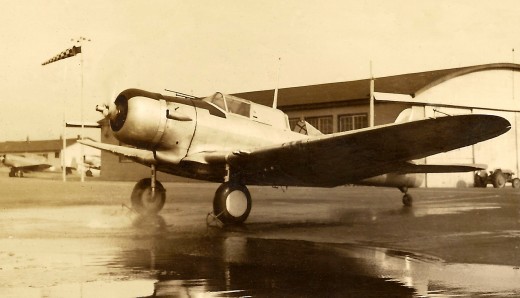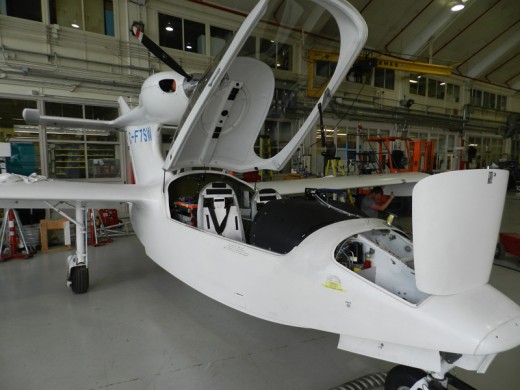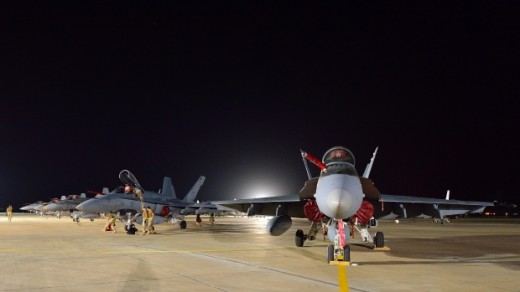 Scroll Down to see all of this week’s updates
Scroll Down to see all of this week’s updates
Downed Aircraft Recovered After 74 Years

A salvage crew pulled parts of the wreckage of a Northrop A-17 Nomad from Lake Muskoka, ending a seven-year effort to properly honour the two men lost in the crash.
RCAF pilot Peter Campbell, 24, and observer Theodore Bates were killed after their aircraft collided with another over the lake in bad weather on Dec. 13, 1940. Campbell had received his wings the previous day and was on a day off when word came that another pilot had gone missing. He and Bates volunteered to fly in the search.
He didn’t even have time to sew his wings onto his uniform. He tucked them into his pocket,” RCAF Maj. Jan Kennedy told the Canadian Press. “The weather was terrible and he ended up in a mid-air collision.”
The wreck was found in 2010 after a three-year campaign by the local Legion and the Lost Airmen of Muskoka campaign. A Royal Canadian Navy team recovered the remains in 2012 and the first pieces of the aircraft were hauled aboard a barge on Tuesday. The recovery is expected to be completed over the weekend.
The RCAF had 32 Nomads and used them as advanced trainers and target tugs.
The RCAF hopes to restore the aircraft to static display condition at the National Air Force Museum of Canada in Trenton. There are two other Nomads on static display, one in the U.S. and another in Peru.
Seawind Accident At NRC

A light aircraft undergoing certification flight testing at the Nationals Research Council in Ottawa was damaged in a landing accident at Ottawa International Airport Oct. 24.
The Seawind amphib reportedly “skidded off the runway” in a landing attempt but details are sketchy.
“It skidded off the runway quite a long way so there is significant damage to the plane,” said NRC spokesman Charles Drouin.
The Seawind is owned by an American company that has been trying for about 20 years to gain certification for the aircraft, which has been available as a kit for about 30 years. It moved the certification effort to Quebec about 10 years ago.
After its first certification test aircraft crashed in Manitoba in 2007, Seawind found new investors and managed to resume flight tests at NRC in 2010. Late last year the company announced that certification was imminent after Transport Canada accepted the use of a stick pusher stall prevention system.
F-18s Arrive in Kuwait

Six Canadian CF-18 strike aircraft have arrived at their operating base in Kuwait as Canada mounts its contribution to the air campaign against ISIL.
The aircraft left Canada with tanker escorts earlier this week and got to Kuwait Wednesday.
The CF-18s and two CP-140 Aurora long range patrol aircraft will take part in the U.S.-led coalition’s bombing campaign against ISIL positions in the next few days.
Canada now has 12 of its about 80 fighters deployed overseas. There are six CF-18s in Lithuania helping to discourage Russia from getting adventurous in that region.
McLeod Finishes Season Fifth

Red Lake, Ont. native Pete McLeod said he flew well but had a hard time getting maximum performance out of his airplane in an eighth place finish in the final event of the Red Bull Air Race series in Spielberg, Austria last weekend.
Nicolas Ivanoff of France won the race but the big winner of the day was Britain’s Nigel Lamb, who came second in the Spielberg race. The nine points he earned for that placing was enough to vault him ahead of fellow Brit Paul Bonhomme to win the overall title.
McLeod struggled with penalties in the qualifying rounds but managed to get into the second round. But while he was smooth in the course, his aircraft didn’t seem to have the speed it normally has.
“I definitely wanted to fly penalty-free today but I think I just struggled to find the engine setup,” McLeod said after the race. “We looked at the times, and comparatively the lines were there but we just didn’t have the power.”
Later, the team did a compression check on the engine and found a cylinder with low compression, explaining the power loss.
The team was without the services of technician Pat Phillips, who broke his arm in a cycling accident.
